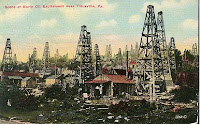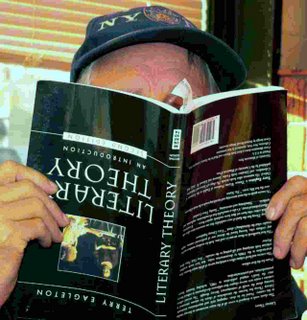My Own Info-Cultural Overload
John Murray Gibbon wrote and published in 1935 a history entitled "Steel of Empire" which is subtitled "A Romantic History of the Canadian Pacific, the Northwest Passage of Today". The maps and illustrations are magnificent, including the one of Canadian water and rail routes on the inside covers. No, I did not Google J. M. Gibbon or search for the book on ABE or anything -- I left that task to my friend at the bookstore, who finally sold me this 423 page tome for CAN $10 instead of the $28.95 my other friend, the bookstore owner, had marked lightly on the fly-leaf page.
Yes, I probably will also purchase and read Pierre Berton's "The Last Rail" plus a few other histories of Canadian railroads and railroading.
The really interesting of part of this visit to the neighbourhood bookstore yesterday, however, revolved less around the titles I scanned on the shelves but the conversation(s) three of us had about 'transportation' into Montreal. Turns out that the woman (I forget her name, dammit!), the one who always comes in on Fridays to buy three pop-lit titles, arrived in Montreal by rail from Halifax in 1950 -- at age 3 after a sojourn in a DP (displaced persons) camp in Eastern Europe from birth to her departure to Canada. Her family was from Lithuania and did I ever get an earful about the situation of Lithuanian immigrant to Canada following the last world war (the present 'world war', actually . . the war that never really ended . . in my humble opinion).
You would be privileged to have heard, or to have me recount here, her personal history (which is not at all a private history). But in the 45 minutes or so that we spoke, the topics ranged so widely that it would take a volume greater than Gibbons's to relate the details and enough background for anyone outside my neighbourhood to understand the facts properly. This just shows the complicated state and entertwined themes of personal, local, social, ethnic, religious, world and linguistic histories. And this is no exaggeration.
(The rapport we three experienced and our mutual interest in exchanging stories is typical of the many high-points in interaction with customers that one sees in the typical used-bookstore on a typical day, by the way. Something I find nobody has time for in the retail trade for new books.)
Such conversations, of course, stimulate my interest in finding out more, meeting other Lithuanians and having more conversations with people I've met over the years who were also DPs before arriving in Canada. In terms of piquing my interest in reading, well one doesn't even know where to begin. But is my reaction typical? Aren't most people simply overloaded with all the details and complications of life as we've lived it over the past half-century or so?
Communities of people in my immediate vicinity seem to be so fractured along linguistic, familial and political divides that the last thing that comes to my mind is that they have a common culture, a common literature. The most common literature I can think of would be a book like 'Microsoft XP for Dummies' or some guide for shopping, dining out in or simply visiting in 'City X'; tour guides to the amusement park, in other words.
Sadly, as well, it seems so typical that the notions about 'sharing stories' are mostly being mouthed by narrators who are thinking more in terms of undergrad or graduate courses in lit and creative writing than by the real DPs in our midst. Or, one day I meet an interesting Cuban and learn immediately that her family 'fled Castro' and the next day the Cuban I meet is in a cultural delegation loyal to Castro! It's the same thing with the Chinese, although none of them are formally sponsored by the present regime. The Chinese storekeeper plays the capitalist entrepreneur card AND the card-carrying Maoist card simultaneously! And where does all this leave the 2nd-gen Eastern European who fled both the communists and the fascists and whose parents got jobs with Northern Electric and whose pension and estate melted when Nortel went into free-fall? But, typically, where does this leave the person who doesn't care a damn about politics but who wishes that their parents had immigrated to Los Angeles instead of to Québec. Where do you even start?
It is no wonder that the No. 1 Target being attacked by the performance poets I've heard and seen lately has been the boob tube and/or the instant stardom 'for everybody' epitomized by " Star Academy" shows. But where would we be if the show were called 'Estonian for a Night'?
Conclusion? I guess I'm suffering from information overload just based on one 45-minute conversation in a bookstore yesterday. I think I too will turn on the boob tube and tune out for a little break or pick up an escapist novel I see on the shelf. I don't think I could handle a romantic-historical narrative about how all history revolves around circumnavigating the earth in a timeless search for oriental spices.

















